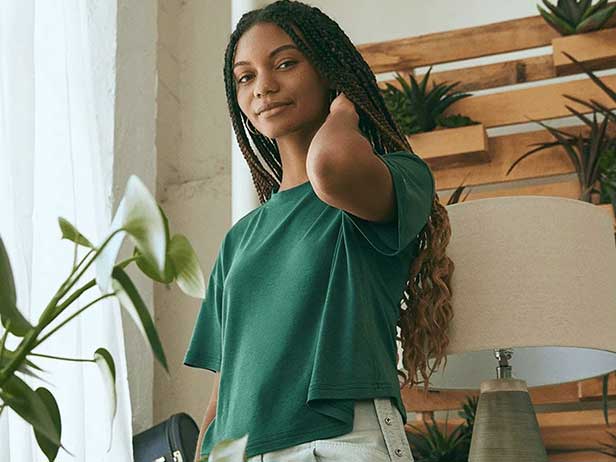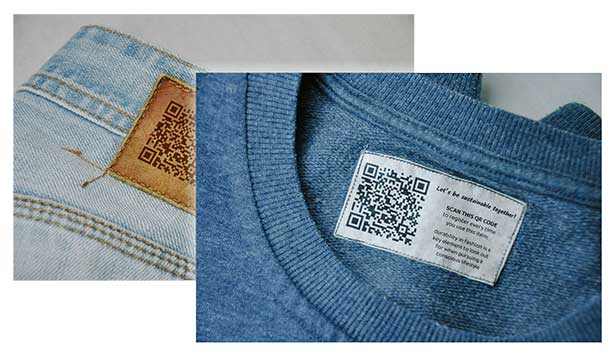November 17, 2020
3 Trends in Sustainable Fashion
One brand is incorporating fiber made from discarded snow crab shells into T-shirts.
Sustainability is an oft-used buzzword in fashion – one that’s likely to conjure up images of polyester made with recycled plastic bottles. And that’s a great start, but many apparel makers are moving beyond the expected to come up with creative ways to incorporate sustainable initiatives into their brands.
1. Experiment With Unconventional Fabrics.

Allbirds is selling T-shirts made from discarded snow crab shells.
Known for its sustainable footwear, Allbirds stepped up its fashion game with a debut apparel collection that includes T-shirts, sweaters, cardigans and a puffer jacket. Of particular note, however, are Allbirds’ T-shirts, which are made from discarded snow crab shells. Jad Finck, head of innovation and sustainability at Allbirds told Fast Company, that they spent several years perfecting the fiber, which has inherent odor-fighting antimicrobial properties. Allbirds works with a mill to extrude the shell powder into a fiber, which is then woven into fabric.
“Discarded material is the holy grail when it comes to sustainable fibers,” Finck told Fast Company. “It’s far better for the environment than getting raw materials from scratch.”
2. Use Technology to Encourage Eco-Friendly Behavior.

Brands that participate in the Wear Me 30 Times initiative include a QR code label that the wearer can scan to keep track of how often they wear a garment.
Several companies in the promotional products industry have created “impact calculators” online to help customers maximize their sustainability efforts. Allmade (asi/34341), for example, lets users enter a type and quantity of traditional T-shirt to see things like how much water would have been saved if it had been one of their tees instead. Imprint Genius (asi/230604) has a “Promo Done Greener” calculator. The distributor asks customers to enter details of their apparel order into the online tool, which generates the estimated carbon dioxide emissions associated with the order. The distributor will direct the calculated impact cost to fund environmental offsetting projects sponsored by Gold Standard.
Slow fashion initiative Wear Me 30 Times is using QR codes to encourage people to keep their clothing longer. Consumers will be able to scan the code on clothing from participating brands to go to a native-mobile experience and register the item and record each time they wear it. Reaching 30 wears could unlock coupons and other rewards.
3. Upcycle Vintage Pieces for Unique Results.

Toronto-based Redwood Classics collaborated with Preloved on The Conscious Holiday Collection, using upcycled landfill-destined fabric to create scarves and mittens for the holidays.
More and more fashion brands are repurposing existing clothing and fabric (whether it’s “post-consumer waste that has been purchased, worn and discarded or “deadstock” that was never sold). The results are often one-of-a-kind pieces that are gentler on Mother Earth. French-Danish brand Hôtel Vetements, established in 2017, uses discarded curtains and other fabrics from French hotels and transforms them into stylish, handmade wearables. Urban Renewal, an initiative by retailer Urban Outfitters, takes vintage apparel and upcycles it with techniques like hand dying or adding paint splatters to create a special piece that is “refreshed, restyled and renewed by us, just for you,” according to its website.
Suppliers in the promo industry have also dabbled with upcycling. Toronto-based Redwood Classics, for example, collaborates with Preloved, a brand that has upcycled vintage fabric for everything from holiday mittens to face masks.
View this post on Instagram

Product Hub
Find the latest in quality products, must-know trends and fresh ideas for upcoming end-buyer campaigns.